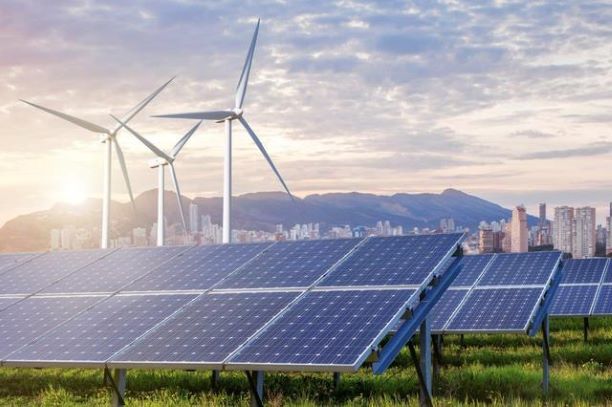

A new report has forecasted that the world’s total renewables-based power capacity will grow by 50 percent between 2019 and 2024. This increase of 1,200 gigawatts (GW), which is equivalent to the current total power capacity of the United States, will be driven by cost reductions and concerted government policy efforts.
The report, “Renewables 2019” by the International Energy Agency (IEA), further adds that solar PV will account for 60 percent of the rise. The share of renewables in global power generation is set to rise from 26 percent at present to 30 percent in 2024.
The installation of solar PV systems on homes, commercial buildings and industrial facilities are set to take off over the next five years, transforming the way electricity is generated and consumed, according to the latest renewable energy market forecast.
Distributed PV accounts for almost half of the growth in the overall solar PV market through 2024. Contrary to conventional wisdom, commercial and industrial applications rather than residential uses dominate distributed PV growth, accounting for three-quarters of new installations over the next five years. This is because economies of scale combined with better alignment of PV supply and electricity demand enable more self-consumption and bigger savings on electricity bills in the commercial and industrial sectors.
Still, the number of solar rooftop systems on homes is set to more than double to some 100 million by 2024, with the top markets on a per capita basis that year forecast to be Australia, Belgium, California, the Netherlands and Austria.
“As costs continue to fall, we have a growing incentive to ramp up the deployment of solar PV,” said Dr. Fatih Birol, the IEA’s Executive Director. The cost of generating electricity from distributed solar PV systems is already below retail electricity prices in most countries. The IEA forecasts that these costs will decline by a further 15 percent to 35 percent by 2024, making the technology more attractive and spurring adoption worldwide.
The expected growth predicted by the report will come after renewable capacity additions stalled last year for the first time in almost two decades. The renewed expansion, however, remains well below what is needed to meet global sustainable energy targets.
“Renewables are already the world’s second-largest source of electricity, but their deployment still needs to accelerate if we are to achieve long-term climate, air quality, and energy access goals,” said Dr. Birol.
Additionally, according to the report’s Accelerated Case, improving economics, policy support and more effective regulation could push distributed PV’s global installed capacity above 600 GW by 2024, almost double Japan’s total power capacity today. Yet this accelerated growth is still only 6 percent of distributed PV’s technical potential based on the total available rooftop area.
The report also offers forecasts for all sources of renewable energy. Renewable heat is set to expand by one-fifth between 2019 and 2024, driven by China, the European Union, India and the United States. The heat and power sectors become increasingly interconnected as renewable electricity used for heat rises by more than 40 percent. But overall, renewable heat potential remains vastly underexploited. The share of renewables in total heat demand is forecast to remain below 12 percent in 2024, calling for more ambitious targets and stronger policy support.
Biofuels currently represent some 90 percent of renewable energy in transport and their use is set to increase by 25 percent over the next five years. Growth is dominated by Asia, particularly China, and is driven by energy security and air pollution concerns. Despite the rapid expansion of electric vehicles, renewable electricity only accounts for one-tenth of renewable energy consumption in transport in 2024. And the share of renewables in total transport fuel demand still remains below 5 percent. The Accelerated Case sees renewables in transport growing by an additional 20 percent through 2024 on the assumption of higher quota levels and enhanced policy support that opens new markets in aviation and marine transport.
In a significant move toward advancing green energy and industrial growth in the state, Himachal…
Golabl chemical conglomerate BASF has announced that its now offering the world’s first biomass-balanced polyethersulfone…
In a crucial stint to bolster the biogas sector and sustainable dairying in the country,…
TotalEnergies SE has received approval to proceed with its Middlebrook solar and battery project in…
Andhra Pradesh Chief Minister Chandrababu Naidu has inaugurated the Rs 1,000-crore green hydrogen plant of…
The BITS Pilani has developed an innovative solution for managing landfill leachate, domestic septage, and…